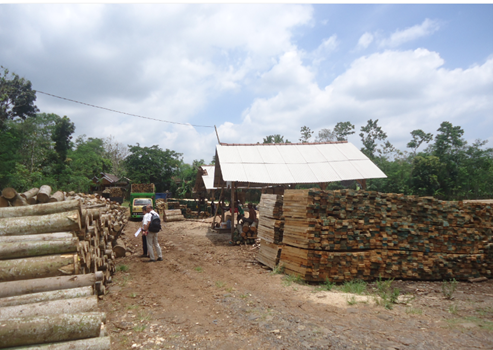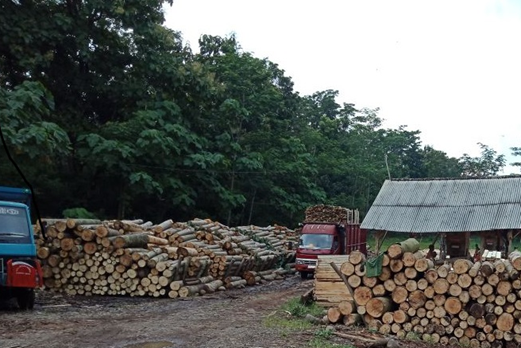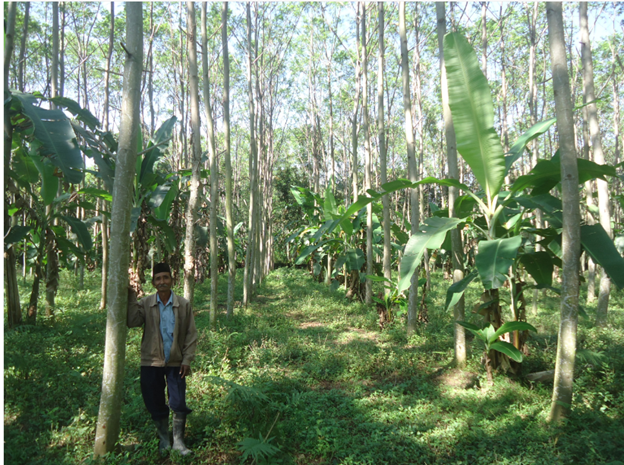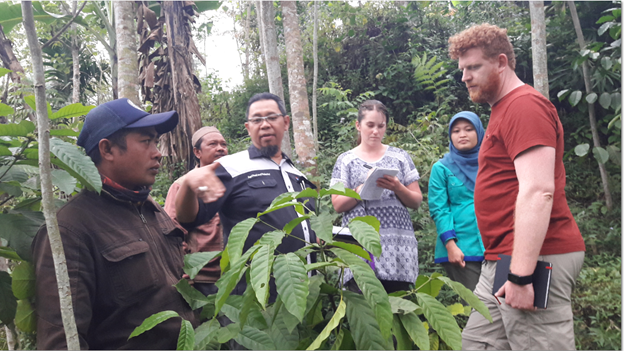
- Soil Association
- Causes and campaigns
- Protecting and celebrating forests
- Our sustainable forestry work: Probolinggo, Indonesia

Our sustainable forestry work: Probolinggo, Indonesia
Due to historic uncontrolled forest clearance for commercial timber such as mahogany and teak, the Probolinggo region of East Java has been part of a government initiative to replant and increase forested areas in recent years, in an attempt to limit or reverse the amount of land converted to farming.
The replanting and illegal logging or harvesting of these areas by local groups has resulted in intensive harvesting activities and monoculture timber crops with little biodiversity; this causes erosion, soil compaction and increased run off, which in turn contributes to flash flooding.
The Kam KTI Co-Operative
KSU Alas Mandiri KTI (KAM KTI) is a co-operative managing 1,004.55 hectares of forested land. Created in response to these environmental concerns, the co-operative consists of 1,296 farmers, organised by region into 30 groups. Each group is headed by a member who represents them and attends annual training events hosted by KAM KTI; the representatives can then pass these learnings onto their local groups.

Getting Certified
The creation of KAM KTI and its structure of forestry management has enabled it to become a consistent source of reliable quality FSC® (Forest Stewardship Council®) timber, and they have been certified by the Soil Association Certification Forestry team since 2008. By certifying with us, the co-op has access to better prices and support from the start
The co-operative also manage and distribute PPE, control any chemical usage, and keep hold of all records of land use, preparation, harvesting and others that are relevant to legal obligations and their certification.
Harvest and selling wood through the co-operative
KAM KTI provides the tree seedlings free of charge, and also provides and maintains the saw mill machinery, so that the harvesting mills can be run by the community.
During the training, they offer advice on planting, care and harvesting, and encourage farmers to diversify into subsistence crops as part of an agroforestry system that will sustain them financially and delay the need for timber harvesting. In contrast to the way the land was used before, timber harvesting is now planned and organised, not carried out on-demand.


KAM KTI regulates the timber price received by farmers - preventing them from going too high - and distributes 40% of the profit fund amongst members at its annual meeting. The prices they pay are 30 to 70 Indonesian Rupiah higher than the market average, and payment is made to the members within a week of harvest.
The co-operative then sells its timber to PT Kutai Timber Indonesia (PT KTI) where it is used to create door frames, plywood, biofuel pellets and even the dust created is sold, mainly to the Japanese market where requirements for reliably sourced FSC certified timber is increasing.
Recently, timber harvesting has changed from 30cm dbh (diameter at breast height) to 40cm dbh, evidence of the successful adoption of agroforestry as a means of subsistence and reducing the time pressure on timber harvesting. Sengon is the dominant timber species, harvested every 6-8 years, with areas underplanted with mahogany and gmelina, a longer rotation crop harvested every 15 years.
The biodiversity in their locality has also greatly improved, achieved through a growing awareness of the human impact on their surroundings and the deforestation from illegal logging, as well as the implementation of diverse crops, through the agroforestry programme.
Benefits for the community, and the environment
Through becoming FSC certified, the members of KAM KTI are ensuring that their profits continue to increase, as well as providing raised living standards and an improved quality of life. Membership of certified farming groups is respected by the wider community and members are proud of the association.
What are the benefits of agroforestry?
The agroforestry/subsistence crops that they grow include coffee, white tea, banana, chili, bamboo, corn, avocado, cloves, ginger, taro, as well as raising livestock. To increase slope stability, areas liable to slip or erosion are selectively thinned and underplanted with elephant grass, and the condition of these areas is monitored by members and replanted as needed.
These agroforestry techniques provide food and income for the farmers in between harvesting timber crops, which is something they would not usually have access to.

Recently, timber harvesting has changed from 30cm dbh (diameter at breast height) to 40cm dbh, evidence of the successful adoption of agroforestry as a means of subsistence and reducing the time pressure on timber harvesting. Sengon is the dominant timber species, harvested every 6-8 years, with areas underplanted with mahogany and gmelina, a longer rotation crop harvested every 15 years.
The biodiversity in their locality has also greatly improved, achieved through a growing awareness of the human impact on their surroundings and the deforestation from illegal logging, as well as the implementation of diverse crops, through the agroforestry programme.

Learn more about the work we do across our organisation to protect and celebrate forests around the world.
-
Sign up for our email community
If you're interested in learning more about our work in sustainable food, farming and forestry, sign up for our regular newsletter. You'll be first to hear about opportunities to get involved in our campaigning work, and we'll send you top tips for sustainable living
sign up today

